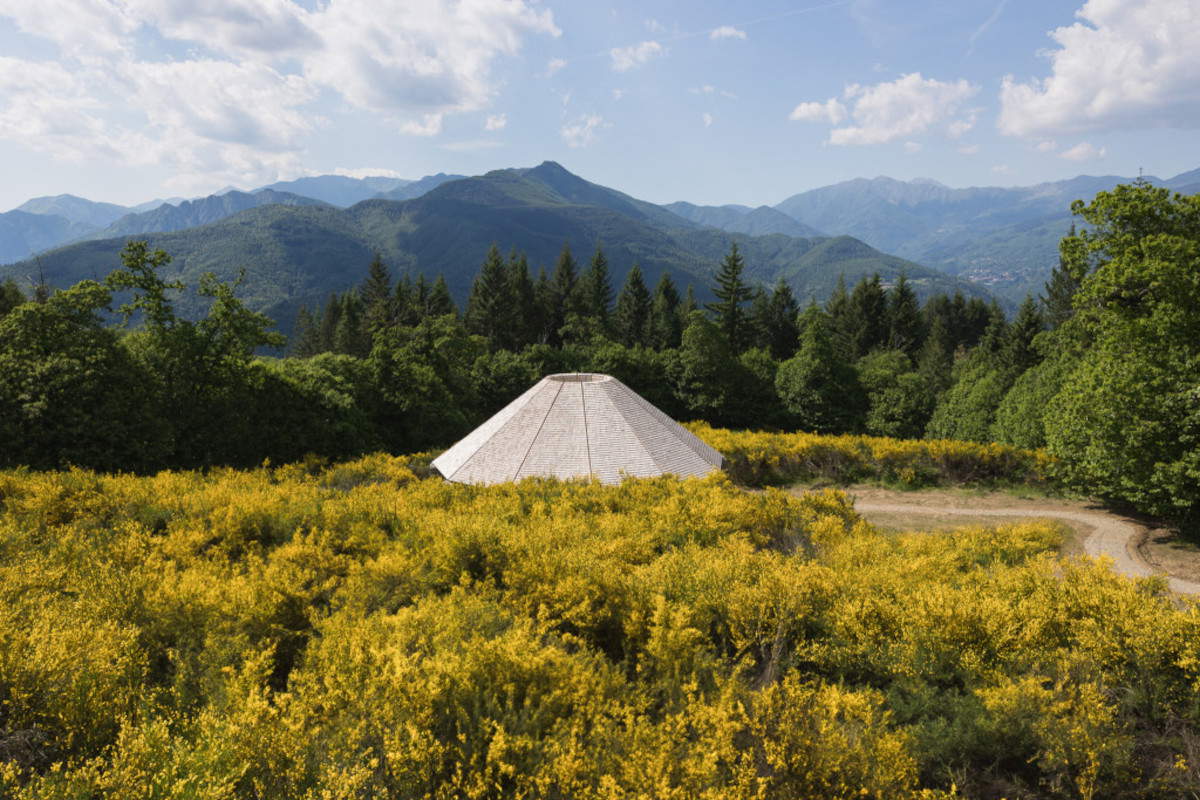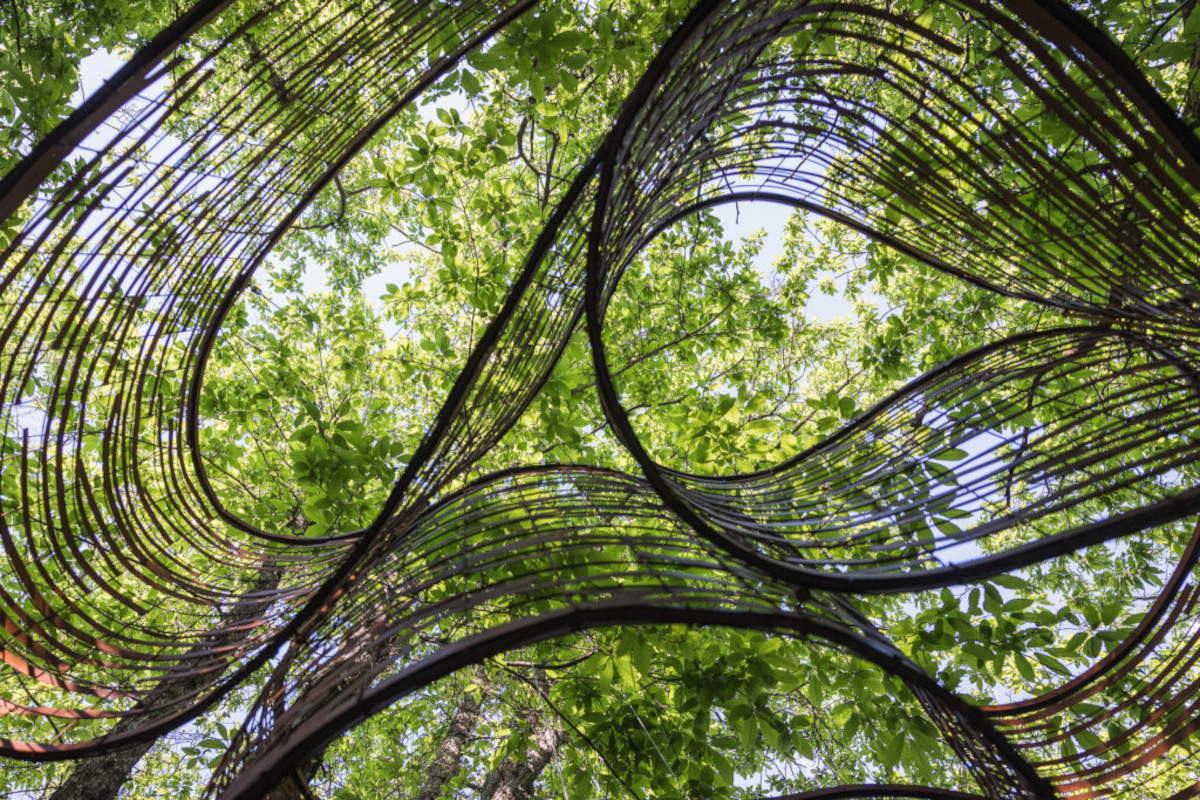In the heart of the Pistoia Apennines, inside the Oasi Dynamo nature reserve, until Nov. 7, 2025 OCA - Oasy Contemporary Art and Architecture offers visitors a circular itinerary studded with interventions by protagonists of the contemporary art and architecture scene (Alejandro Aravena, Mariangela Gualtieri with Michele De Lucchi, Kengo Kuma, Quayola, David Svensson, Pascale Marthine Tayou and Matteo Thun) that takes shape around a universal question: How will we inhabit the world?
Under the artistic direction of Emanuele Montibeller, the project is articulated along different perspectives-urbanistic, philosophical, cultural, and environmental-inviting internationally renowned architects and urban planners to devise works created specifically for this context. Interventions conceived in close connection with the landscape, in a symbiotic relationship with the surrounding nature.
The itinerary is configured as a narrative in stages: each work dialogues with the others, reviving the central theme and interpreting it through the experience, geographical origin, cultural background and professional trajectory of each author. No definitive solutions are offered, but stimuli and questions that open up plural visions. The installations thus become prototypes, hypotheses of new ways of inhabiting and interpreting the world, fragments of a choral, open and shared narrative.

OCA’s narrative path begins with a global vision, an investigation of the world in its “otherness,” and then invites introspection and reflection on the bond we weave with nature. The beginning of the Path is entrusted to Cameroonian artist Pascale Marthine Tayou, whose installation Plastic Bags forcefully denounces the fate of waste produced by the productive excess of the West. Her work opens up a discourse that is not only ecological but also geopolitical, urging a rethinking of the interconnections between different regions and cultures.
On this horizon, environmental issues can no longer be addressed within the narrow confines of the nation, but require an open attitude. This is the conceptual core of Swedish artist David Svensson’s Home of the World.
Kengo Kuma ’s Dynamo Pavilion, on the other hand, takes thinking beyond Western sensibilities by introducing the principles of “emptiness” and silence, central to Eastern tradition. Made of steel and carbon fiber, the structure creeps through the trees of a clearing, appearing as an unexpected encounter. The journey continues with the work conceived by architect and designer Michele De Lucchi together with poet Mariangela Gualtieri. Here the narrative itself becomes architecture: the poem generates the structure, which is renewed with each listening, overturning the classical order of myth-ritual-narrative. The work lives in a “timeless” dimension, evoking mythological atmospheres and allowing a continuous exchange between inside and outside, voice and space.
The ritual dimension also resurfaces in the intervention of architect Matteo Thun, who builds a circle of “dolmens” entitled Fratelli Tutti. The work is inspired by Pope Francis’ encyclical Laudato Si. It is an invitation to recognize ourselves as members of the same planetary community, without barriers or divisions, in a spiritual perspective that invites a renewed inner and outer harmony.

Next to Thun’s circle, nature hides other mysterious presences: black meteorite-like rocks lying at the edge of the forest. These are Italian artist Quayola’s Erosions, lava stones eroded by algorithms and special machines, in continuity with the ancient Eastern tradition of “scholars’ rocks,” natural stones carved by man to be contemplated.
The tour concludes with Self Regulation by Alejandro Aravena. The work confronts the visitor with an implicit choice, reflecting his or her way of conceiving the relationship with himself or herself and the environment. There is no right or wrong answer: what matters is the process of awareness that the work activates, transforming the aesthetic experience into a personal journey of discovery.

 |
| In the heart of the Pistoia Apennines, an artistic journey through nature to reflect on how we will inhabit the world |
Warning: the translation into English of the original Italian article was created using automatic tools. We undertake to review all articles, but we do not guarantee the total absence of inaccuracies in the translation due to the program. You can find the original by clicking on the ITA button. If you find any mistake,please contact us.